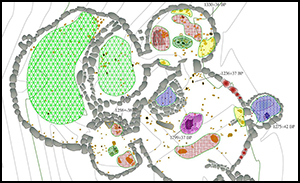Article contents
Dynamic places, durable structures: Early Formative agropastoral settlements of the southern Andes, Argentina
Published online by Cambridge University Press: 21 November 2016
Abstract

The settlement of high-altitude uplands by early agropastoralists demanded specific kinds of social and economic adaptation. Upland valley systems in north-west Argentina were used extensively during the Formative period (200 BC to AD 850). New investigations of the alluvial fans of the Tafí Valley show how the occupation history of the region developed across time and space, demonstrating remarkable stability over 1000 years of agropastoral exploitation. The dense but scattered distribution of early farmers across this landscape highlights household continuity through a period of regional population growth.
- Type
- Research
- Information
- Copyright
- Copyright © Antiquity Publications Ltd, 2016
References
- 3
- Cited by


